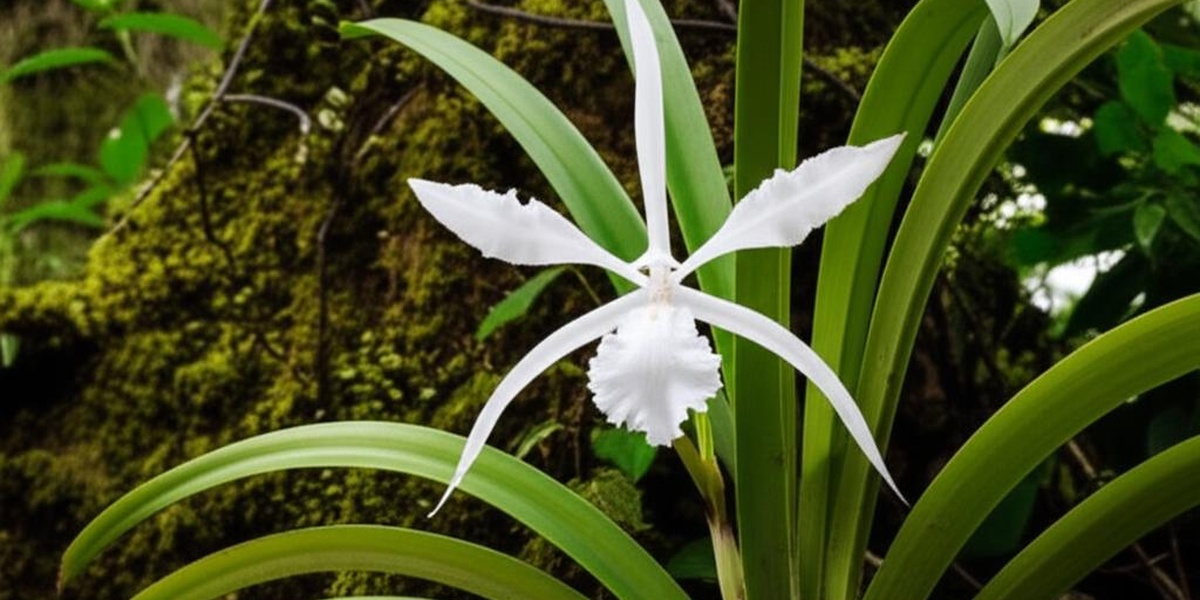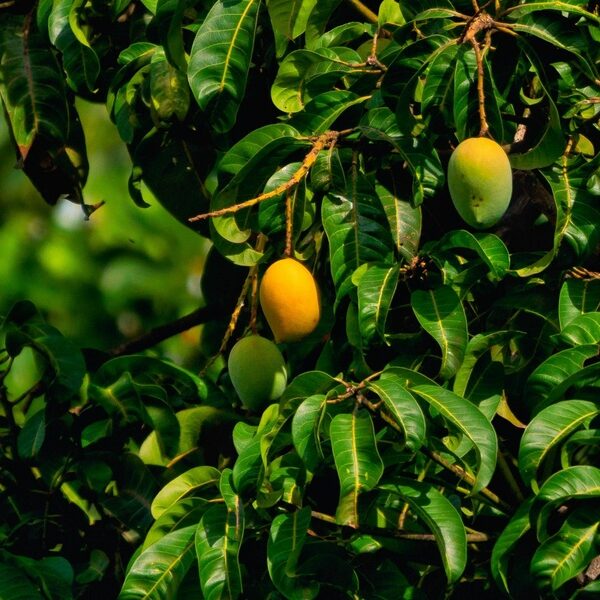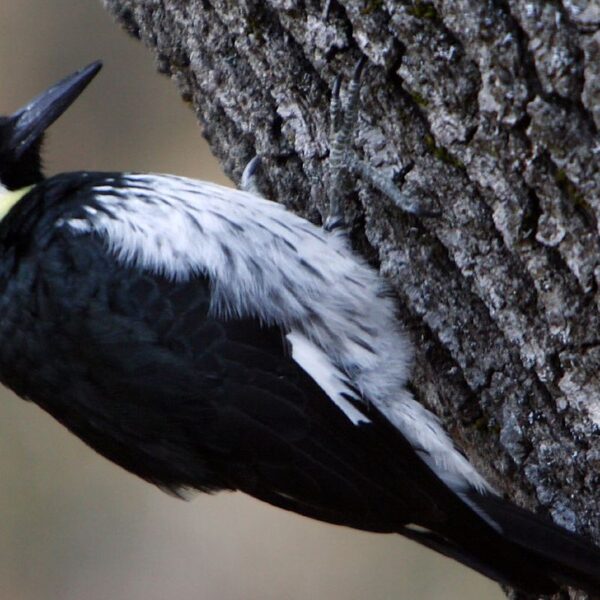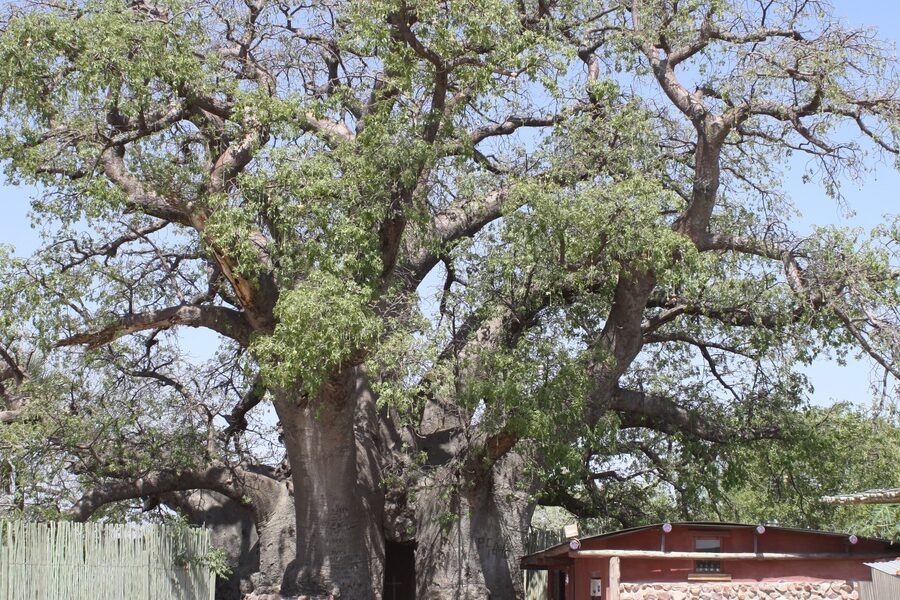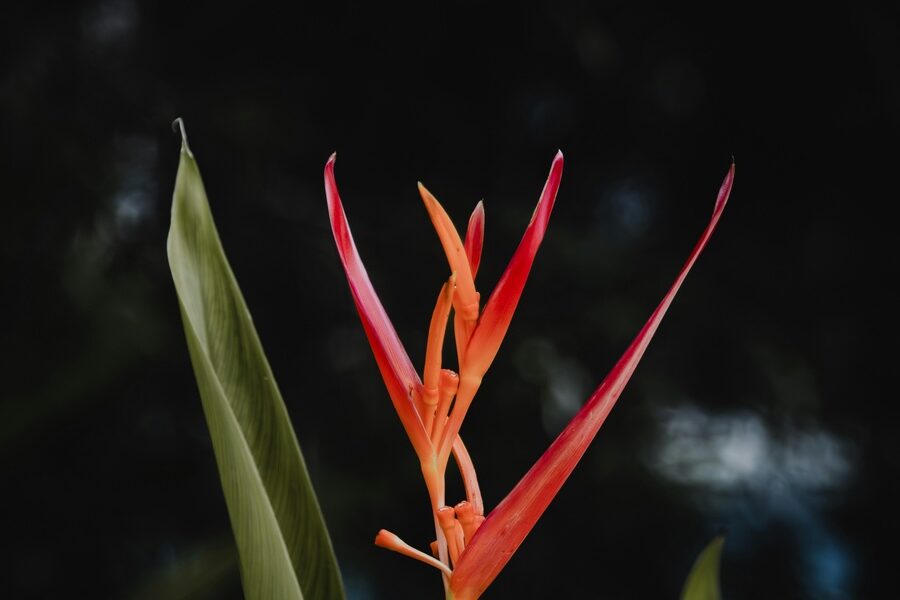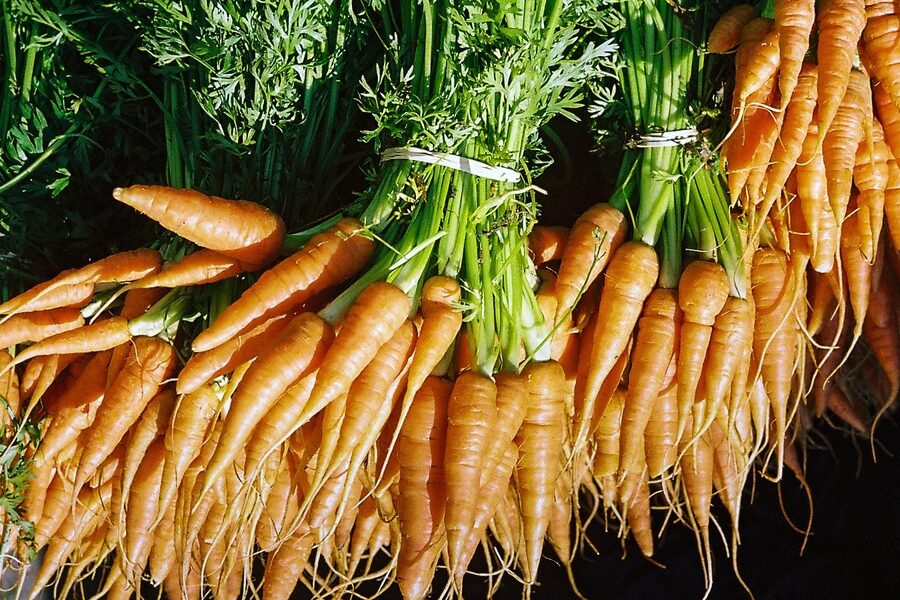Guatemala’s landscapes host a wide variety of ecosystems — from Pacific lowland forests and Caribbean wetlands to highland cloud forests and volcanic slopes — all of which influence the plants that thrive here. This collection brings together species found in gardens, native woodlands and remote reserves so you can see how they fit into different regions and uses.
There are 95 Guatemala’s native plants, ranging from Achiote to Zinnia. For each entry the fields are Scientific name,Typical height (m),Habitat & range — the complete list you’ll find below.
How can I use this list to identify plants in the field?
Start by narrowing candidates by habitat and Typical height (m) from the table, then compare the Scientific name with photos or a regional guide; noting leaf shape, flowers and location makes ID faster. If unsure, photograph key features and check with local botanists or plant ID apps.
Do any of these native species need conservation or legal protection?
Yes — while this list focuses on native species, some are rare or legally protected. For conservation status check Guatemala’s national red list, IUCN or CITES, and contact local conservation groups before collecting or removing plants.
Guatemala’s Native Plants
| Common name | Scientific name | Typical height (m) | Habitat & range |
|---|---|---|---|
| Ceiba Tree | Ceiba pentandra | 20-40 | Lowland rainforests throughout Petén and coastal plains. |
| White Nun Orchid | Lycaste skinneri | 0.3-0.5 | Humid cloud forests of Alta Verapaz and Chiapas border region. |
| Guatemalan Fir | Abies guatemalensis | 20-35 | High-altitude cloud forests and subalpine zones, 2,400-4,000 meters. |
| Mahogany | Swietenia macrophylla | 30-40 | Lowland tropical rainforests, especially in the Petén department. |
| Ramón Tree | Brosimum alicastrum | 20-35 | Lowland and moist forests, a key species in Mayan forest gardens. |
| Cacao Tree | Theobroma cacao | 4-8 | Humid understory of lowland rainforests. |
| Allspice | Pimenta dioica | 7-12 | Moist or wet limestone forests, often found in the Petén. |
| Hand-flower Tree | Chiranthodendron pentadactylon | 10-20 | High-altitude cloud forests. |
| Sky Plant | Tillandsia xerographica | 0.5-1 | Dry oak and pine forests of southeastern Guatemala, growing on trees. |
| Guatemalan Ponytail Palm | Beaucarnea guatemalensis | 4-8 | Seasonally dry forests and scrublands in eastern Guatemala. |
| Parlor Palm | Chamaedorea elegans | 1-2 | Understory of lowland rainforests in Petén and Alta Verapaz. |
| Rosy Trumpet Tree | Tabebuia rosea | 15-25 | Dry to moist forests, widely planted in towns and along roadsides. |
| Pacaya Palm | Chamaedorea tepejilote | 2-6 | Wet forest understory in mountainous regions. |
| Guatemalan Avocado | Persea americana | 10-20 | Native to highland forests, now widely cultivated. |
| Gumbo-limbo | Bursera simaruba | 5-15 | Dry tropical forests along both coasts and inland valleys. |
| Spanish Cedar | Cedrela odorata | 20-30 | Moist and dry forests from lowlands to mid-elevations. |
| Guanacaste Tree | Enterolobium cyclocarpum | 20-35 | Dry forests and savannas, especially on the Pacific slope. |
| Potato Chip Palm | Chamaedorea tuerckheimii | 0.3-0.5 | Cloud forest understory in Alta Verapaz. |
| Tree Dahlia | Dahlia imperialis | 3-6 | Cool, moist mountain canyons and cloud forests. |
| Guatemalan Agave | Agave guatemalensis | 1-1.5 | Dry, rocky slopes in the central and eastern highlands. |
| Nance | Byrsonima crassifolia | 3-10 | Pine-oak forests and savanna ecosystems. |
| Sapodilla | Manilkara zapota | 20-30 | Lowland forests of Petén, a dominant species in Maya forests. |
| Monstera | Monstera deliciosa | 10-20 (vine) | Understory of wet lowland forests. |
| Balsa Tree | Ochroma pyramidale | 15-25 | Pioneer species in clearings and along rivers in wet forests. |
| Calabash Tree | Crescentia cujete | 6-10 | Dry forests, savannas, and coastal areas. |
| Sacred Flower of the Maya | Bourreria huanita | 10-15 | Moist forests of the Pacific slope. |
| Red Mangrove | Rhizophora mangle | 5-15 | Coastal lagoons and estuaries along the Pacific and Caribbean shores. |
| Logwood | Haematoxylum campechianum | 5-10 | Seasonally flooded lowlands and swamps, especially in Petén. |
| Buttercup Tree | Cochlospermum vitifolium | 5-15 | Dry deciduous forests on the Pacific slope. |
| Hot Lips Plant | Psychotria elata | 1-4 | Understory of tropical rainforests. |
| Firebush | Hamelia patens | 2-4 | Forest edges, clearings, and secondary growth habitats. |
| Lignum Vitae | Guaiacum sanctum | 3-7 | Coastal dry forests. |
| Mother of Cacao | Gliricidia sepium | 10-12 | Dry forests, now widely used in agriculture. |
| Tiger Flower | Tigridia pavonia | 0.5-0.8 | Highland pine-oak forests. |
| Teosinte | Zea mays ssp. parviglumis | 2-3 | Dry slopes and stream banks in southwestern Guatemala. |
| Vanilla | Vanilla planifolia | 10-15 (vine) | Wet lowland forests, climbing up host trees. |
| Achiote | Bixa orellana | 2-6 | Lowland moist forests, often in disturbed areas. |
| Loroco | Fernaldia pandurata | 2-5 (vine) | Dry forests and thickets on the Pacific slope. |
| Jícama | Pachyrhizus erosus | 4-5 (vine) | Native to Mexico and Central America, found in tropical climates. |
| Ayote | Cucurbita argyrosperma | 3-5 (vine) | Cultivated and found wild in seasonally dry areas. |
| Wild Black Cherry | Prunus serotina | 15-25 | Highland pine-oak and cloud forests. |
| Guatemalan Podocarp | Podocarpus guatemalensis | 15-25 | Humid cloud forests at mid to high elevations. |
| Standley’s Juniper | Juniperus standleyi | 5-15 | Highest volcanic peaks, above 3,000 meters, forming alpine scrubland. |
| Ocote Pine | Pinus oocarpa | 20-30 | Dry slopes and plateaus in the central and western highlands. |
| Chichicaste | Wigandia urens | 2-5 | Disturbed areas in mid-elevation forests, common on roadsides. |
| Poor Man’s Umbrella | Gunnera insignis | 1-2 | Steep, wet slopes and stream banks in cloud forests. |
| Strangler Fig | Ficus aurea | 15-30 | Lowland and montane rainforests. |
| Trumpet Tree | Cecropia peltata | 10-20 | Pioneer species in rainforest clearings and disturbed areas. |
| Shaving Brush Tree | Pseudobombax ellipticum | 10-18 | Seasonally dry forests. |
| Guatemalan Palm-fir | Dioon mejiae | 2-4 | Humid forests of the eastern departments. |
| Monkey Tail | Lycopodioides aphyllum | 1-2 (hanging) | Epiphyte on trees in wet montane forests. |
| Sword Fern | Nephrolepis cordifolia | 0.5-1 | Common on forest floors, tree trunks, and rocky banks. |
| Soncoya | Annona purpurea | 6-10 | Lowland deciduous forests. |
| Spineless Yucca | Yucca elephantipes | 6-9 | Dry, scrubby areas throughout the country. |
| Pitahaya | Hylocereus undatus | 5-10 (climbing) | Climbing on trees and rocks in dry or moist forests. |
| Coyol Palm | Acrocomia aculeata | 8-15 | Dry forests and savannas, often in disturbed areas. |
| Bayleaf Palm | Sabal mauritiiformis | 15-20 | Lowland rainforests, especially in the Petén department. |
| Guatemalan Heart-leaf Philodendron | Philodendron hederaceum | 3-6 (vine) | Climbing on trees in humid lowland and montane forests. |
| Anthurium | Anthurium schlechtendalii | 0.5-1 | Terrestrial or epiphytic in wet forests. |
| Dumb Cane | Dieffenbachia seguine | 1-2.5 | Understory of wet lowland rainforests. |
| Candle Bush | Senna alata | 1.5-3 | Riverbanks and moist, disturbed areas. |
| Coral Tree | Erythrina berteroana | 5-10 | Dry to moist forests, widely used as living fence posts. |
| Frangipani | Plumeria rubra | 4-8 | Dry forests, especially on the Pacific slope. |
| Sweet Granadilla | Passiflora ligularis | 5-10 (vine) | Humid montane forests. |
| Potato Vine | Solanum wendlandii | 3-6 (vine) | Wet thickets and forest edges at mid-elevations. |
| Sweetgum | Liquidambar styraciflua | 20-30 | Montane cloud forests. |
| Skinner’s Oak | Quercus skinneri | 20-30 | High-elevation cloud forests. |
| Caribbean Pine | Pinus caribaea | 20-30 | Lowland savannas and sandy coastal plains, as in the Mosquitia region. |
| Ayacahuite Pine | Pinus ayacahuite | 30-40 | High-elevation mixed conifer and oak forests. |
| Paurotis Palm | Acoelorrhaphe wrightii | 4-7 | Seasonally flooded savannas and swampy areas. |
| Mexican Tuberose | Polianthes tuberosa | 0.6-1 | Native to central and southern Mexico/Central America. |
| White-eared Coneflower | Rudbeckia laciniata | 1-2.5 | Moist thickets and stream banks in highland areas. |
| Cardinal Flower | Lobelia cardinalis | 0.5-1.5 | Wet areas, along streams and in marshes. |
| Chain of Love | Antigonon leptopus | 6-10 (vine) | Dry thickets and disturbed areas, climbing over other vegetation. |
| Bullhorn Acacia | Vachellia cornigera | 4-8 | Dry forests and savannas. |
| Morning Glory | Ipomoea purpurea | 2-3 (vine) | Disturbed areas, roadsides, and cultivated fields. |
| Wild Petunia | Ruellia simplex | 0.5-1 | Moist, disturbed sites, riverbanks, and forest edges. |
| Cochineal Nopal Cactus | Nopalea cochenillifera | 2-4 | Dry, arid regions. |
| Maypop | Passiflora incarnata | 6-8 (vine) | Thickets, disturbed areas, and roadsides. |
| Heartleaf Skullcap | Scutellaria ovata | 0.3-0.6 | Rocky woodlands and dry slopes. |
| Mexican Sunflower | Tithonia rotundifolia | 1.5-3 | Roadsides and disturbed areas in sunny, dry locations. |
| Sacred Datura | Datura wrightii | 0.5-1.5 | Dry, sandy soils in disturbed areas. |
| Jewels of Opar | Talinum paniculatum | 0.3-0.7 | Moist, shady, disturbed locations. |
| Roselle | Hibiscus sabdariffa | 1-2.5 | Native to the Old World but naturalized very early. True native is H. poeppigii |
| Poeppig’s Hibiscus | Hibiscus poeppigii | 1-2 | Pine rocklands and dry scrub habitats. |
| Purpletop | Verbena bonariensis | 1-1.5 | Open, sunny areas, roadsides, and fields. |
| Mexican Marigold | Tagetes erecta | 0.5-1 | Highland valleys and slopes. |
| Cosmos | Cosmos bipinnatus | 1-2 | Open meadows and disturbed areas in highlands. |
| Zinnia | Zinnia peruviana | 0.2-0.6 | Dry, open, disturbed areas. |
| Buttonbush | Cephalanthus occidentalis | 2-4 | Swamps, marshes, and along stream edges. |
| Joe-Pye Weed | Eupatorium cannabinum | 1-2 | Wet meadows, thickets, and stream banks. |
| Giant Reed | Arundo donax | 3-6 | Riverbanks and wetlands. |
| Southern Cattail | Typha domingensis | 1.5-3 | Marshes, ponds, and slow-moving water bodies. |
| Water Hyacinth | Eichhornia crassipes | 0.3-0.5 | Floating on the surface of freshwater lakes, rivers, and ponds. |
| Mexican Water Lily | Nymphaea mexicana | 0.1-0.2 (on water) | Shallow ponds, lakes, and slow streams. |
Images and Descriptions
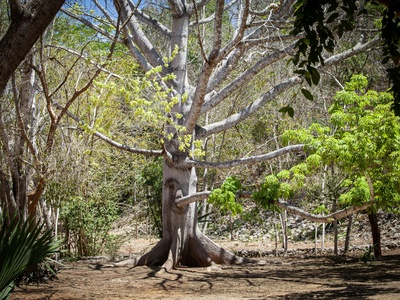
Ceiba Tree
Guatemala’s national tree, sacred to the Maya. A massive, buttressed giant whose seed pods produce silky kapok fiber used for stuffing pillows and life vests. Its canopy is a world of its own.
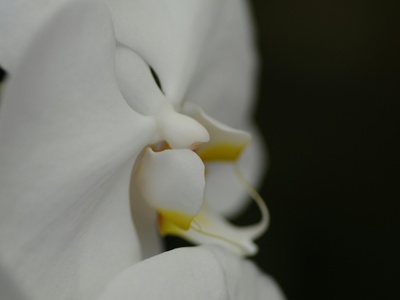
White Nun Orchid
Guatemala’s national flower, a stunning orchid with large, waxy white flowers. Prized by collectors, it is now a protected species due to over-collection and habitat loss.
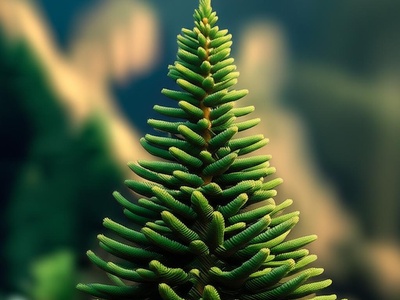
Guatemalan Fir
Central America’s only native fir tree. This endangered conifer is a relic of the ice ages, now threatened by deforestation for agriculture and use as Christmas trees.

Mahogany
A world-renowned timber tree prized for its beautiful, durable, reddish-brown wood. Heavy logging has made it a vulnerable species, and its trade is now regulated.
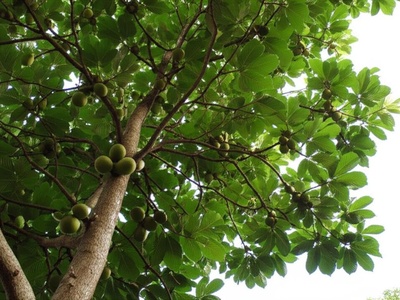
Ramón Tree
Also known as the Breadnut tree. Its nutritious seeds were a staple food for the ancient Maya and are still consumed today, roasted like chestnuts or ground into flour.
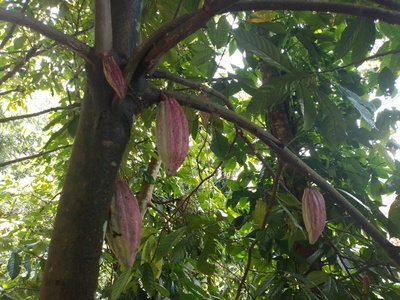
Cacao Tree
The source of chocolate, this small tree was domesticated in Mesoamerica and held immense cultural and economic value for the Maya and Aztec, who used its beans as currency.
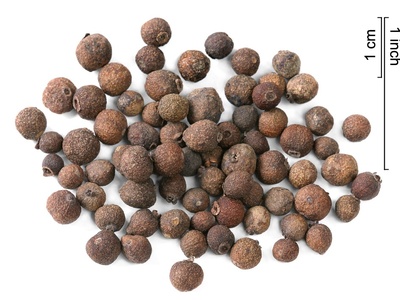
Allspice
The dried unripe berries of this tree are the source of allspice, so named because it combines the flavors of cinnamon, nutmeg, and cloves. A key ingredient in many cuisines.
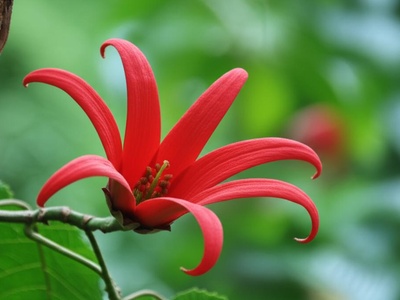
Hand-flower Tree
Famous for its incredible red flowers that are shaped exactly like a human hand, complete with five distinct “fingers.” It was held sacred by pre-Columbian cultures.
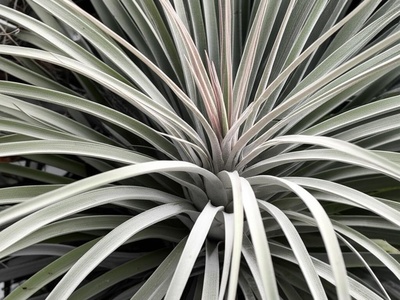
Sky Plant
A large, striking air plant with silvery, curling leaves that form a rosette. It absorbs all its water and nutrients from the air and is popular in ornamental horticulture.
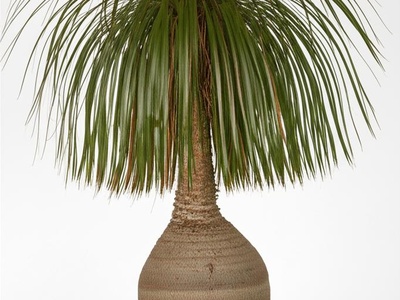
Guatemalan Ponytail Palm
An iconic, slow-growing plant with a massively swollen base for water storage and a spray of long, thin leaves. It is a highly sought-after ornamental plant.
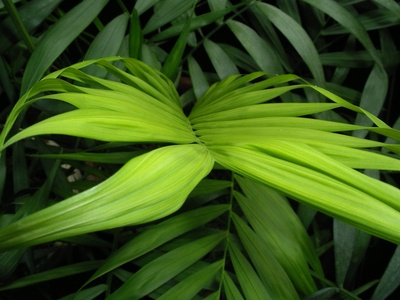
Parlor Palm
One of the world’s most popular house plants, this small, graceful palm is harvested from Guatemalan forests and is a major non-timber export for local communities.
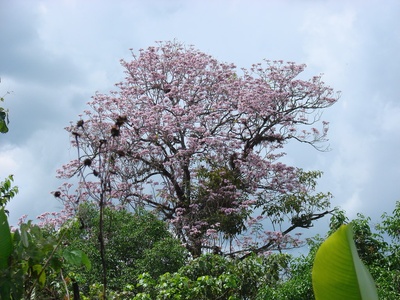
Rosy Trumpet Tree
Known locally as Matilisguate, this tree produces a breathtaking display of pink to lavender trumpet-shaped flowers during the dry season, often carpeting the ground below.
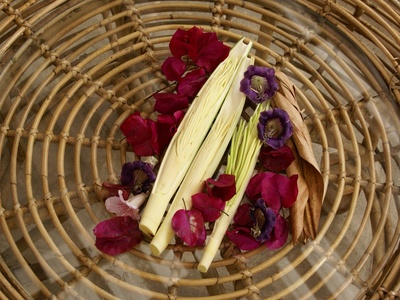
Pacaya Palm
This slender palm is cultivated for its edible male inflorescence, known as “pacaya.” It is a popular local delicacy, typically boiled and served in salads or with eggs.
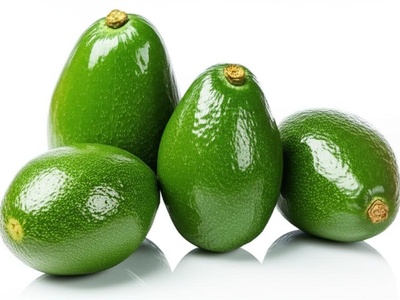
Guatemalan Avocado
The wild ancestor of the modern avocado. Guatemala is a center of origin for this globally important fruit, with many unique native varieties still found in its forests.
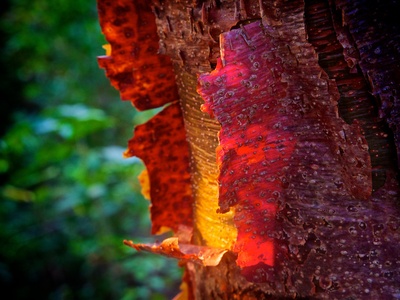
Gumbo-limbo
Often called the “Tourist Tree” for its red, peeling bark resembling sunburnt skin. It grows easily from cuttings and is widely used for living fences.
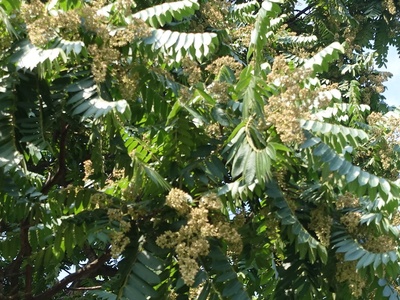
Spanish Cedar
Despite its name, it’s not a true cedar. This tree produces a fragrant, insect-repellent wood that is highly valued for making cigar boxes, furniture, and cabinetry.
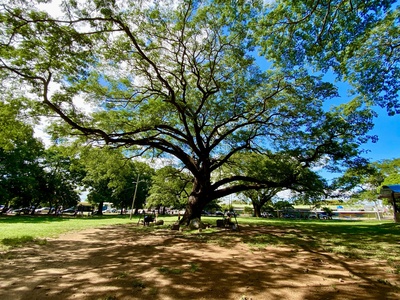
Guanacaste Tree
A massive, wide-spreading tree known for its distinctive ear-shaped seed pods. Its immense canopy provides valuable shade for livestock and wildlife in hot, dry areas.
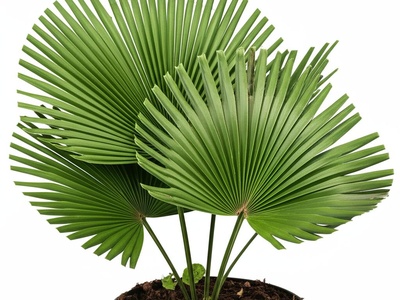
Potato Chip Palm
A rare and unusual dwarf palm with simple, pleated leaves that look like potato chips. Its unique appearance makes it a prized collector’s item among palm enthusiasts.
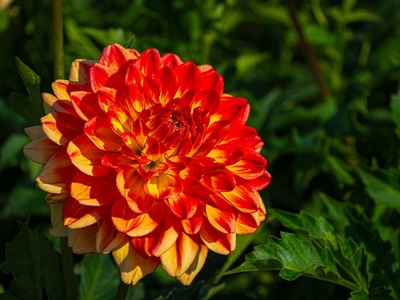
Tree Dahlia
A spectacular dahlia that grows to the size of a small tree, producing large, lavender-pink flowers atop hollow, bamboo-like stems in the late autumn.
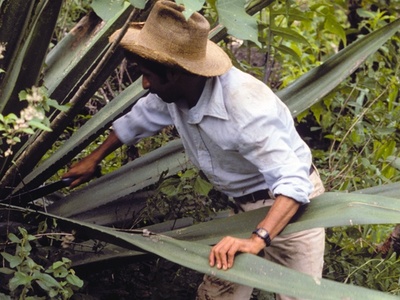
Guatemalan Agave
An endemic agave species that forms a large rosette of stiff, gray-green leaves. Like other agaves, it flowers once in its life, sending up a tall stalk of yellow blooms.
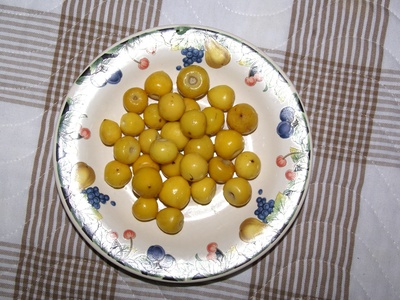
Nance
A small tree that produces small, yellow, intensely aromatic fruits called nance. The fruit is eaten fresh, used in drinks, or preserved in syrup and is popular in local markets.
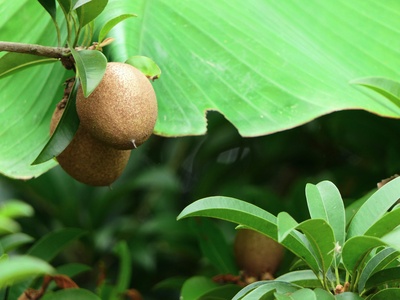
Sapodilla
This tree produces a sweet, grainy fruit called sapodilla. It is also the original source of chicle, the latex sap used to make the first chewing gums.
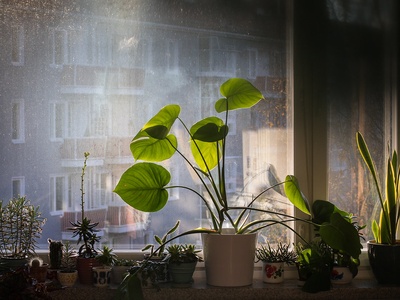
Monstera
The famous “Swiss Cheese Plant,” this climbing vine is native to the region’s rainforests. In the wild, it produces a large, edible fruit that tastes like a tropical fruit salad.
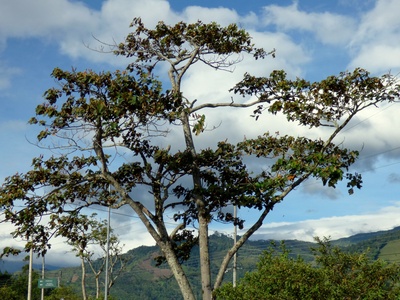
Balsa Tree
Known for producing the lightest and softest commercial wood in the world. This fast-growing tree is essential for ecological succession in rainforests.
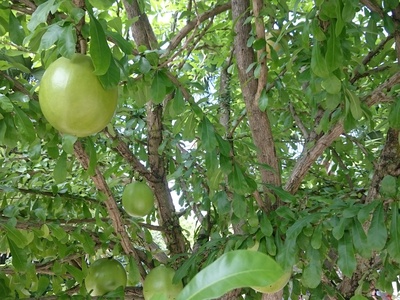
Calabash Tree
This tree produces large, spherical fruits with a hard shell that are not typically eaten but are hollowed out, dried, and used to make traditional bowls, cups, and maracas.

Sacred Flower of the Maya
A tree with extremely fragrant white flowers that were highly esteemed by the ancient Maya and Aztec nobility. The flowers are still used to flavor a special chocolate drink.
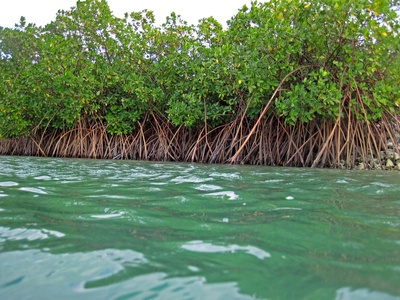
Red Mangrove
A critical coastal species with distinctive prop roots that form dense, tangled thickets. These mangroves protect the coastline from erosion and serve as a nursery for fish.
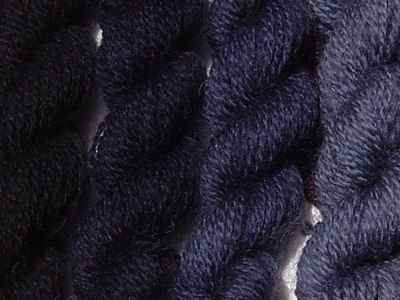
Logwood
The heartwood of this small, thorny tree was a major source of black and purple dyes in the 17th and 18th centuries, making it an extremely valuable export.
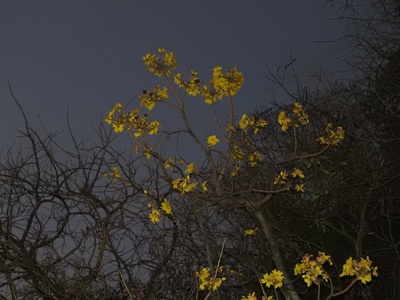
Buttercup Tree
A deciduous tree that bursts into bloom during the dry season, covering itself with large, brilliant yellow flowers that resemble buttercups before the leaves emerge.
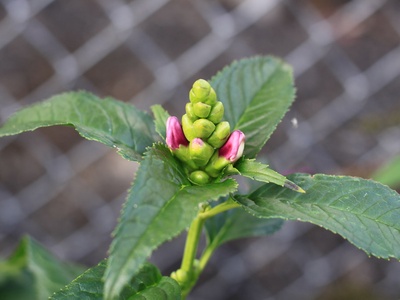
Hot Lips Plant
Famed for its pair of bright red bracts that look exactly like puckered, lipstick-covered lips before the small white flowers emerge. A favorite of ecotourists and photographers.
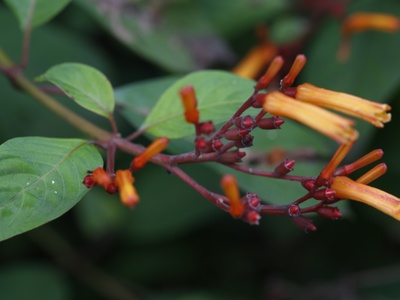
Firebush
A fast-growing shrub with bright orange-red tubular flowers that are a magnet for hummingbirds and butterflies. Also used in traditional medicine to treat skin ailments.
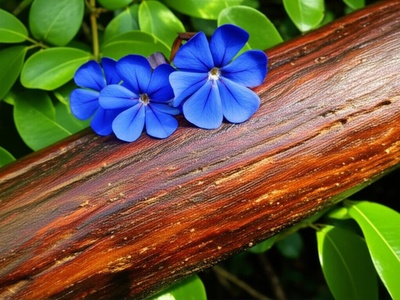
Lignum Vitae
Meaning “wood of life,” this tree has one of the densest woods in the world, so heavy it sinks in water. It produces lovely blue flowers and was historically used for medicinal purposes.
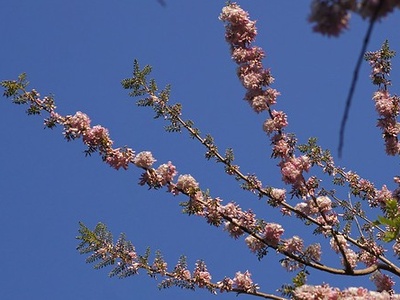
Mother of Cacao
A fast-growing leguminous tree used to provide shade for coffee and cacao plantations, hence its name. It also enriches the soil by fixing nitrogen and is used for live fencing.
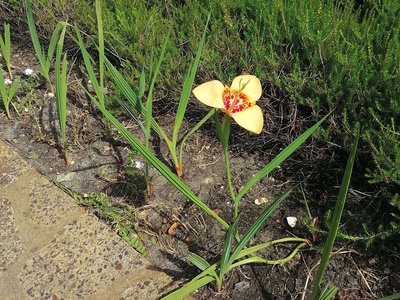
Tiger Flower
A spectacular bulb that produces stunning, triangular flowers with three large outer petals and three small, spotted inner petals. Each intricate flower lasts for only a single day.

Teosinte
The wild ancestor of modern corn (maize). This grass-like plant is critically important for its genetic diversity, holding keys to improving the resilience of one of the world’s most important crops.
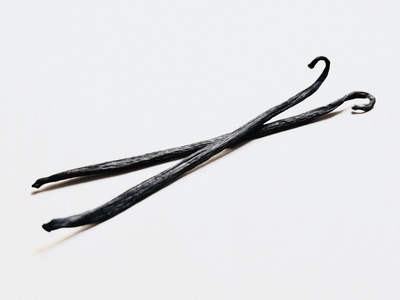
Vanilla
A species of orchid that produces the world’s most popular flavor. The flowers must be hand-pollinated to produce the long seed pods (vanilla beans) we use for flavoring.
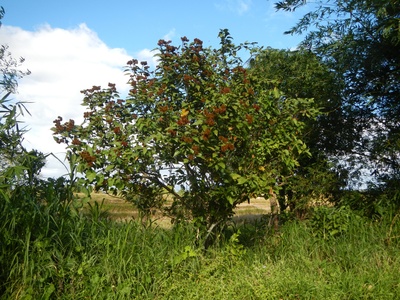
Achiote
The seeds of this small tree are covered in a red-orange pulp that is the source of annatto, a natural food coloring and spice used to give yellow or orange color to many dishes.
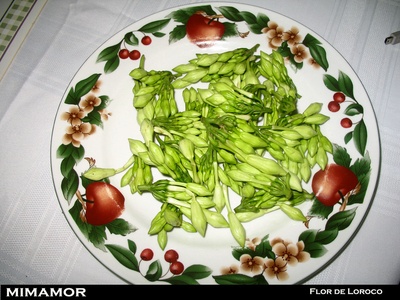
Loroco
A vine whose unopened flower buds, known as loroco, are a highly prized edible delicacy in Guatemala and El Salvador, with a unique, pungent, and earthy flavor.
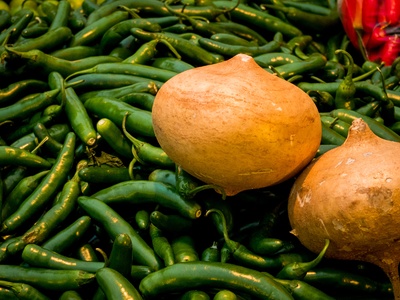
Jícama
A vine cultivated for its large, tuberous root, which is eaten raw. The crisp, juicy, and slightly sweet white flesh is a popular and refreshing snack, often seasoned with chili and lime.
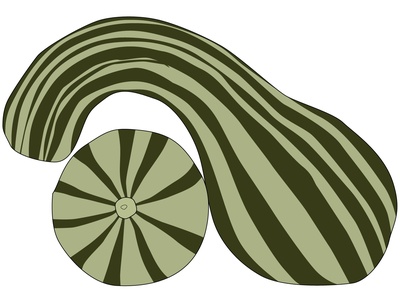
Ayote
A native squash species that is a staple in the local diet. Its flesh, seeds, and flowers are all consumed. The roasted seeds (pepitas) are particularly popular.
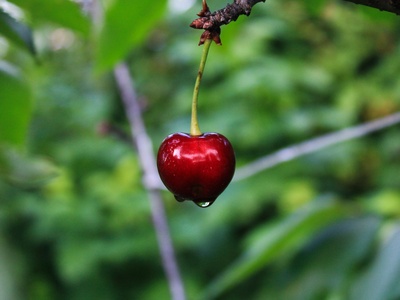
Wild Black Cherry
Known locally as Capulín, this tree is a wild relative of the cultivated cherry. It produces small, dark fruits that are eaten fresh or made into jellies and traditional drinks.
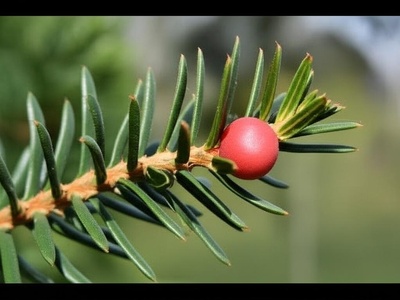
Guatemalan Podocarp
A native conifer belonging to an ancient Southern Hemisphere family. Unlike pines, it has broad, leathery leaves and produces a single seed attached to a fleshy, berry-like stalk.
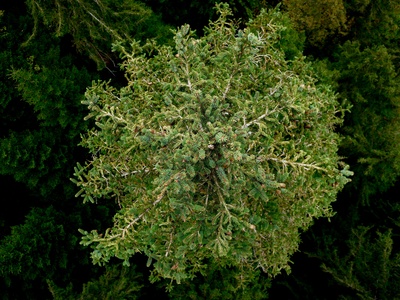
Standley’s Juniper
An endangered juniper species that grows at the very highest elevations in Guatemala. It is a slow-growing, gnarled tree adapted to harsh alpine conditions.
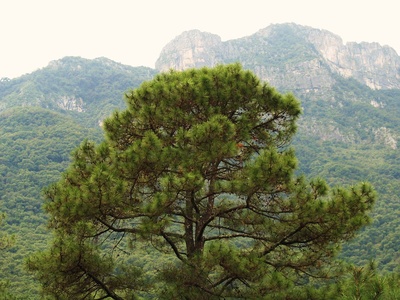
Ocote Pine
One of the most common pines in Guatemala. Its resin-rich wood, known as “ocote,” is traditionally used as kindling for starting fires and for making torches.
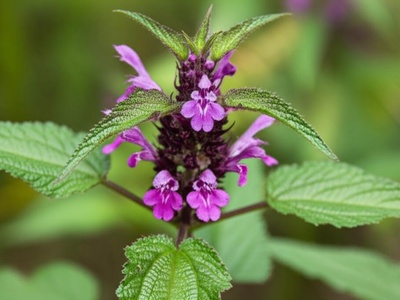
Chichicaste
A large herb or shrub covered in stinging hairs that cause a painful rash, similar to a nettle. Despite this, it produces beautiful clusters of purple flowers.
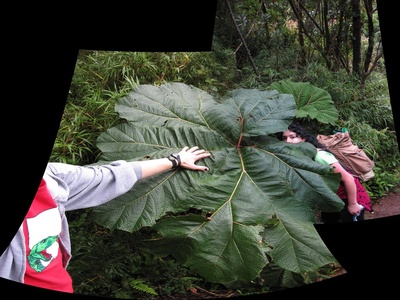
Poor Man’s Umbrella
A massive herbaceous plant with gigantic leaves that can reach over a meter in diameter, resembling giant rhubarb. The leaves are sometimes used as makeshift umbrellas.
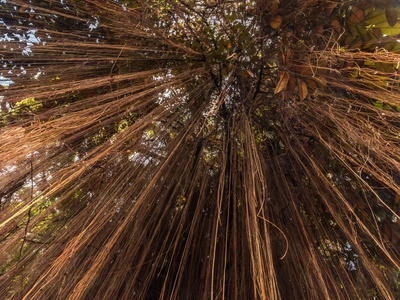
Strangler Fig
This tree begins life as an epiphyte on a host tree. It sends down aerial roots that eventually envelop and “strangle” the host, leaving a massive, free-standing fig tree with a hollow core.
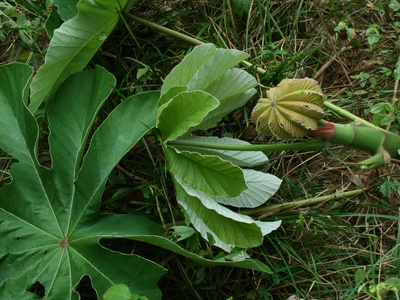
Trumpet Tree
A fast-growing tree with large, umbrella-like leaves that are silvery-white underneath. Its hollow stems are often inhabited by stinging Azteca ants in a symbiotic relationship.
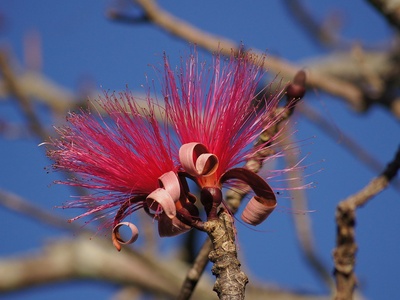
Shaving Brush Tree
A deciduous tree famous for its spectacular flowers, which have hundreds of long, silky pink or white stamens that resemble a shaving brush. The flowers appear when the tree is leafless.
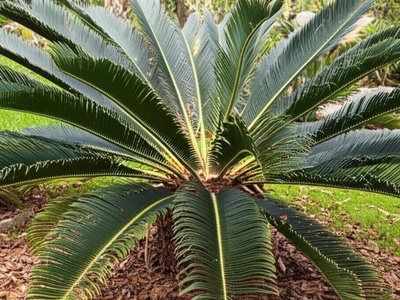
Guatemalan Palm-fir
A cycad, often called a living fossil, as this group of plants predates the dinosaurs. It has stiff, palm-like fronds and produces large, cone-like structures.
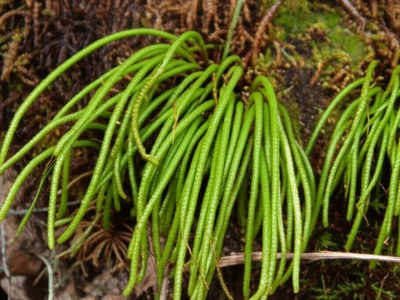
Monkey Tail
A type of clubmoss with long, trailing stems that resemble a green, fuzzy tail. It is a primitive, non-flowering plant related to ferns.
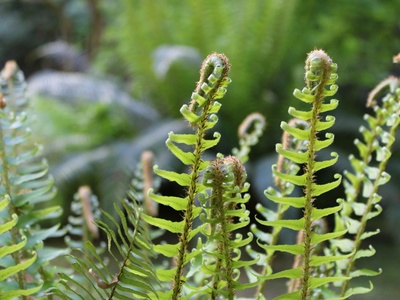
Sword Fern
A common and hardy native fern with upright, sword-shaped fronds. It spreads via underground tubers and can form dense colonies in suitable habitats.
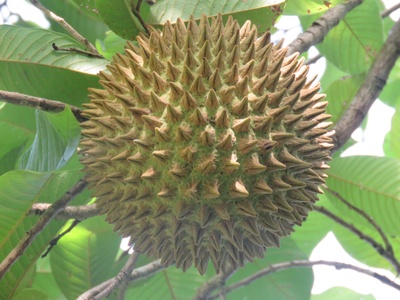
Soncoya
A relative of the soursop and cherimoya, this tree produces a large, round fruit covered in a felt-like brown skin. The bright orange flesh has a strong, unique flavor.
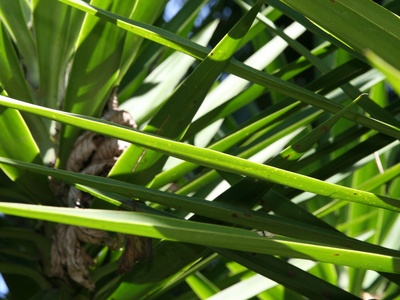
Spineless Yucca
This yucca has a thick, trunk-like stem and rosettes of sword-like leaves that are notably less sharp than other yuccas. It produces large panicles of white, bell-shaped flowers.
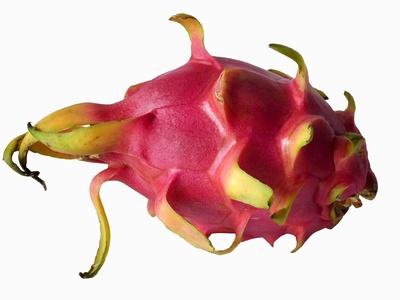
Pitahaya
The cactus that produces the world-famous Dragon Fruit. It is a night-blooming vine with enormous, fragrant white flowers that are pollinated by bats and moths.
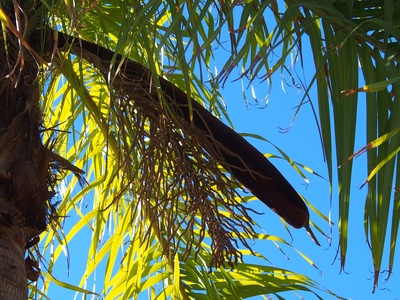
Coyol Palm
A palm tree heavily armed with sharp black spines on its trunk and leaves. It produces hard-shelled nuts that contain an oil-rich, edible kernel.
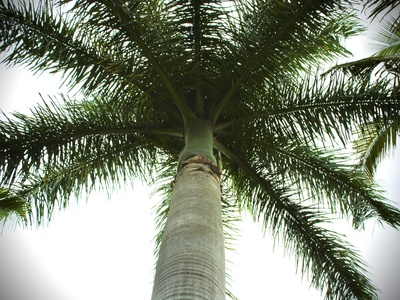
Bayleaf Palm
A tall, graceful fan palm with large, deeply split leaves. It is a common component of the forest canopy in northern Guatemala.
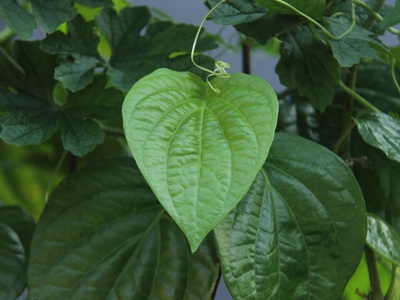
Guatemalan Heart-leaf Philodendron
A very popular houseplant worldwide, this vining philodendron with its classic heart-shaped leaves is native to the rainforests of Guatemala and surrounding regions.
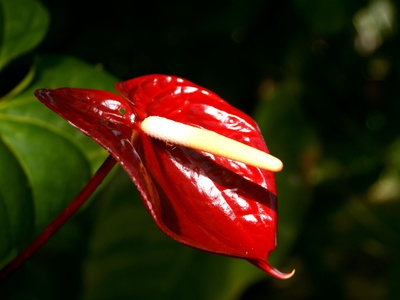
Anthurium
A large anthurium with massive, upright leaves that can reach over a meter long. It produces a purplish-green spathe and spadix typical of the genus.
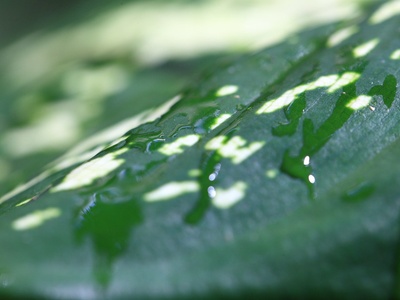
Dumb Cane
A common understory plant with large, variegated leaves. It is known as “Dumb Cane” because its sap contains calcium oxalate crystals that cause painful swelling if ingested.
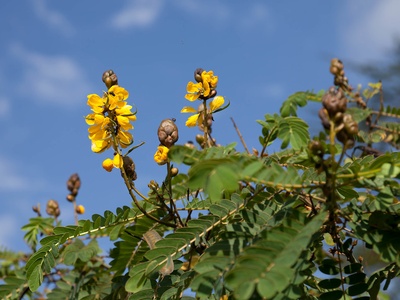
Candle Bush
A shrub with large leaves that fold up at night. It is most famous for its erect flower clusters that look like thick, yellow candles, giving it its common name.
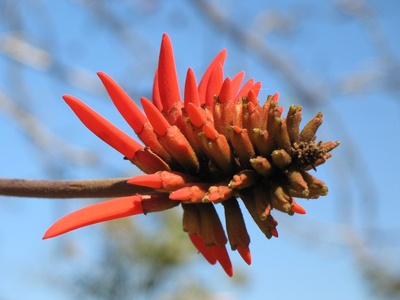
Coral Tree
Known as “Machete” locally, this thorny tree produces brilliant red flowers that attract hummingbirds. It is easily propagated from stakes and is a common sight in agricultural landscapes.
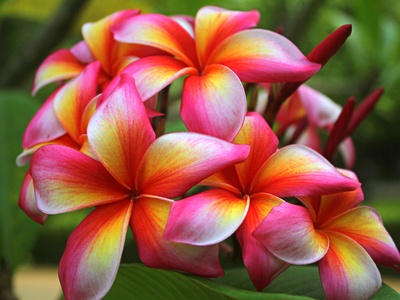
Frangipani
A small, gnarled tree known for its waxy, incredibly fragrant flowers that can be white, yellow, pink, or red. The flowers are used in leis and religious ceremonies.
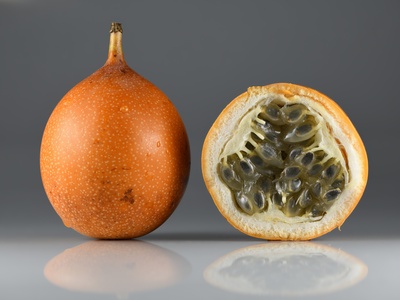
Sweet Granadilla
A species of passionflower that produces a delicious, aromatic fruit with a hard, orange shell. The pulp is gray and juicy with a sweet, perfumed flavor.
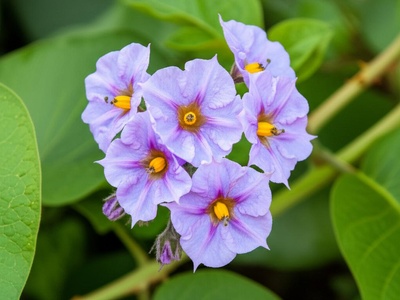
Potato Vine
A climbing, semi-woody vine with sparse thorns and large clusters of beautiful, lilac-blue flowers that resemble potato blossoms. It can form dense, scrambling thickets.
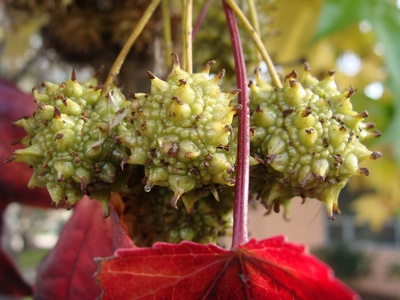
Sweetgum
A large deciduous tree known for its star-shaped leaves that turn brilliant shades of purple, red, and yellow in the fall. Its spiky, spherical fruits are also distinctive.
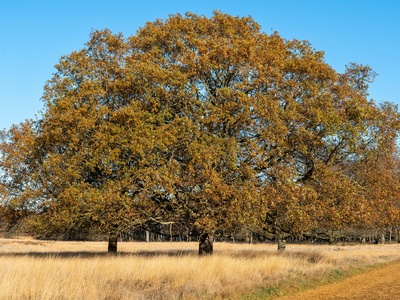
Skinner’s Oak
A majestic oak tree, endemic to the region, known for producing some of the largest acorns in the world, which can be the size of a chicken’s egg.
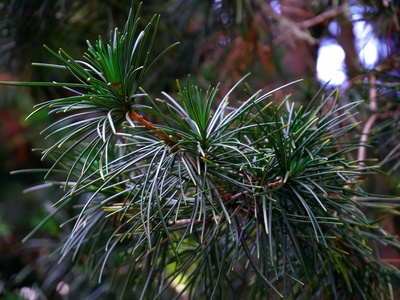
Caribbean Pine
A tropical pine adapted to warmer, humid climates and periodic fires. It is an important timber species and a key component of its specific savanna ecosystem.
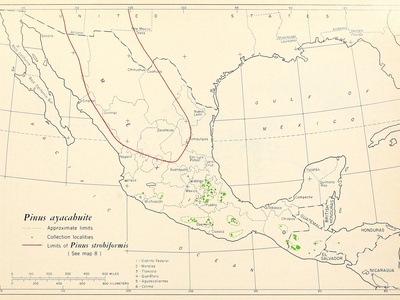
Ayacahuite Pine
A tall, stately pine with long, soft, bluish-green needles that grow in bundles of five. It produces long, curved cones that are often dripping with resin.
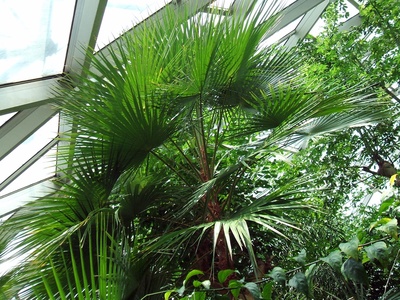
Paurotis Palm
A clustering fan palm that forms dense thickets from a spreading underground root system. Its slender trunks are covered in old leaf bases and fibers.

Mexican Tuberose
A nocturnal-blooming plant with a tall spike of incredibly fragrant, waxy white flowers. Its scent is used in perfumery, and it was revered by the Aztecs.
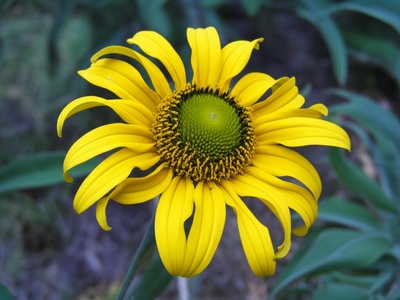
White-eared Coneflower
A tall perennial wildflower with bright yellow, daisy-like flowers with drooping petals and a greenish central cone. A cheerful sight in mountain meadows.
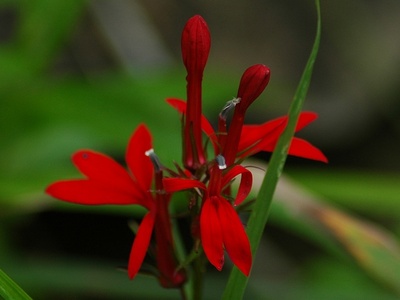
Cardinal Flower
This plant produces an intensely red spike of tubular flowers that are a primary food source for hummingbirds, which are its main pollinator.
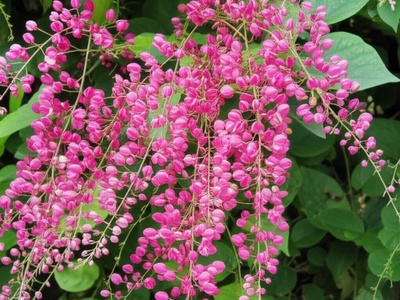
Chain of Love
A fast-growing vine that produces profuse sprays of small, bright pink flowers. It is both a native species and a popular, hardy ornamental in tropical gardens.
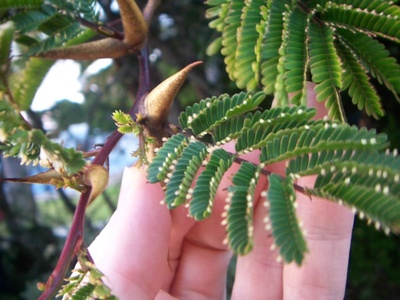
Bullhorn Acacia
This acacia is famous for its swollen, horn-like thorns that provide shelter for aggressive stinging ants. The tree and ants have a classic symbiotic relationship for defense.
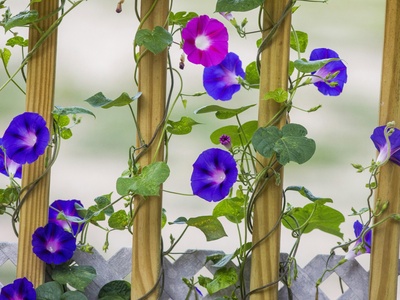
Morning Glory
The common morning glory, with its beautiful trumpet-shaped flowers in shades of purple, blue, and pink, is a native vine of the American tropics.
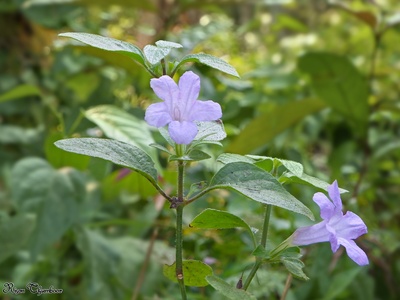
Wild Petunia
A hardy perennial that produces numerous violet, trumpet-shaped flowers. Although often seen as a weed, it’s a native species that provides nectar for butterflies.
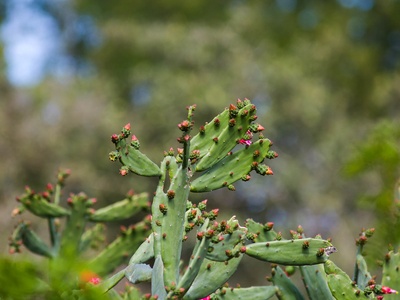
Cochineal Nopal Cactus
A species of prickly pear cactus that is the primary host for the cochineal insect. The insect is crushed to produce a vibrant, natural red dye called carmine.
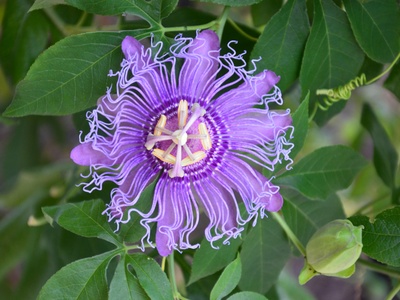
Maypop
A hardy passionflower vine with intricate, fringed purple flowers. It produces an edible fruit called a maypop, which is used in drinks and desserts.
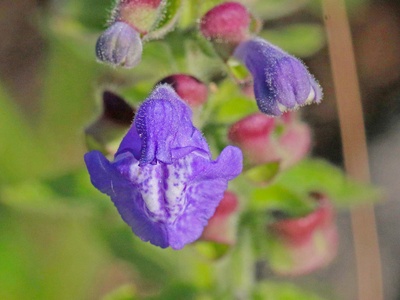
Heartleaf Skullcap
A perennial herb in the mint family with toothed, heart-shaped leaves and spikes of blue, hooded flowers. It is found in the highland oak-pine forests.
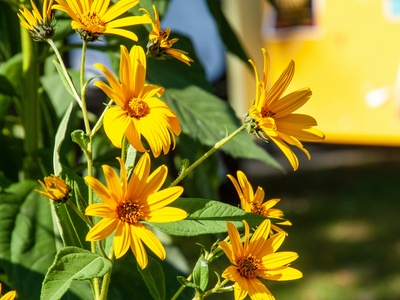
Mexican Sunflower
A large, bushy annual with bright orange-red, daisy-like flowers. It is a fast-grower and is highly attractive to butterflies, especially Monarchs.
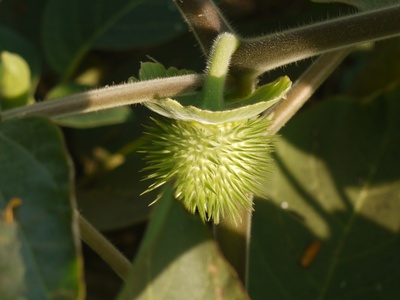
Sacred Datura
A sprawling herbaceous perennial with large, trumpet-shaped white flowers that bloom at night and are pollinated by hawkmoths. All parts of the plant are highly toxic.
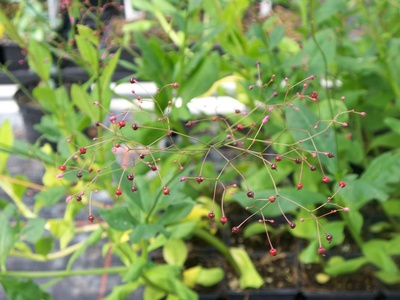
Jewels of Opar
A succulent-like herb with simple green leaves and airy panicles of tiny pink flowers. It is better known for the subsequent glossy, ruby-red seed capsules that resemble jewels.
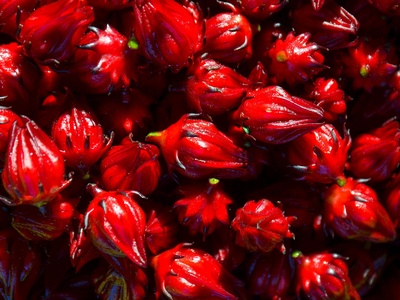
Roselle
I will replace this. Let’s use *Hibiscus biseptus* which is a native species.
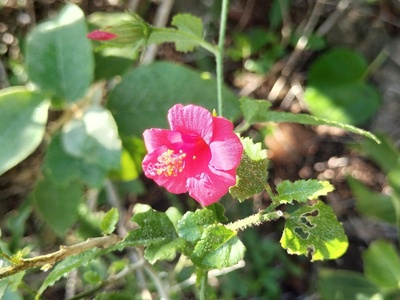
Poeppig’s Hibiscus
A small native hibiscus with brilliant red flowers that are distinctively rolled or twisted, never fully opening flat. A delicate and unique species compared to its showier cousins.
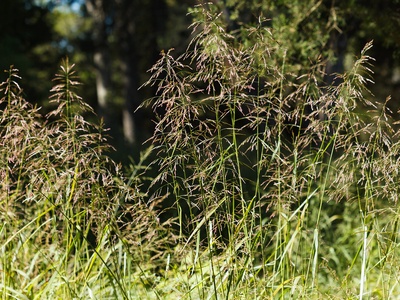
Purpletop
A tall, wiry perennial that produces a cloud of small, purple flower clusters on sparsely-leaved stems. It creates an airy, see-through effect and is popular in gardens.
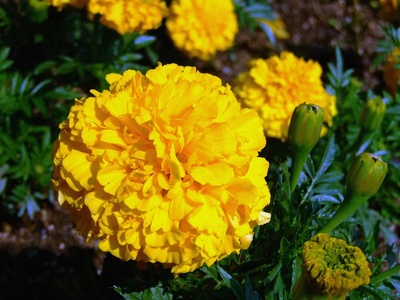
Mexican Marigold
The wild ancestor of the African Marigold. This pungent-smelling annual is native to the region and has been used since Aztec times in ceremonies, medicine, and as a dye.
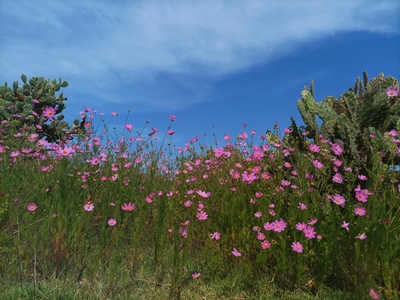
Cosmos
The popular garden flower is native to Mexico and Guatemala. It has feathery foliage and simple, daisy-like flowers in shades of pink, white, and magenta.
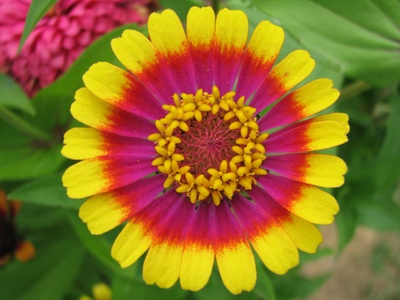
Zinnia
A wild ancestor of the common garden zinnia. This species has simple, single-petaled flowers, typically in red, orange or yellow, and is very drought tolerant.
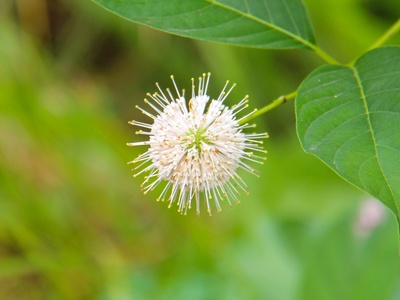
Buttonbush
A shrub that grows in wet soils and produces unique, spherical flower heads composed of many tiny, fragrant white flowers, making it look like a pincushion.
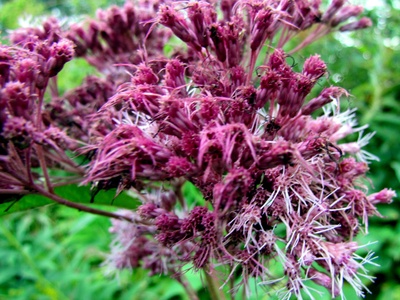
Joe-Pye Weed
A tall perennial herb that produces large, dome-shaped clusters of fuzzy, pinkish-purple flowers in late summer. It is very attractive to butterflies and other pollinators.
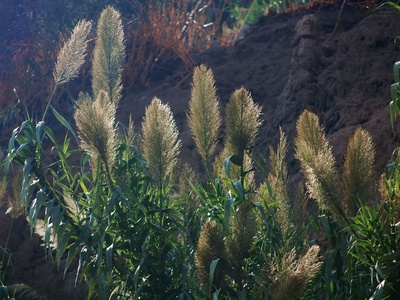
Giant Reed
A very tall, robust grass that resembles bamboo. It grows in dense stands and has been used traditionally for construction, musical instruments (reeds), and weaving.
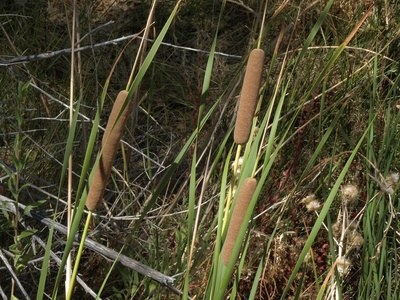
Southern Cattail
An aquatic plant easily recognized by its distinctive fuzzy, sausage-shaped brown flower spike. It provides critical habitat for wetland birds and wildlife.
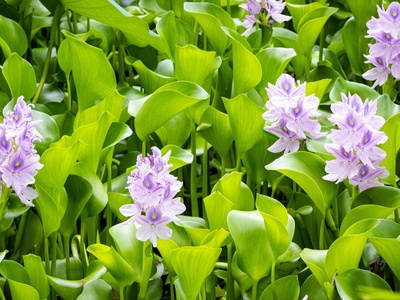
Water Hyacinth
A free-floating aquatic plant with shiny green leaves and beautiful lavender flowers. While native, it can become invasive due to its rapid growth rate.
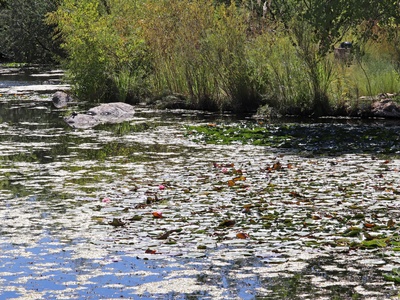
Mexican Water Lily
A native water lily with round, floating leaves and bright yellow flowers that open during the day. It provides shelter for fish and aquatic invertebrates.
